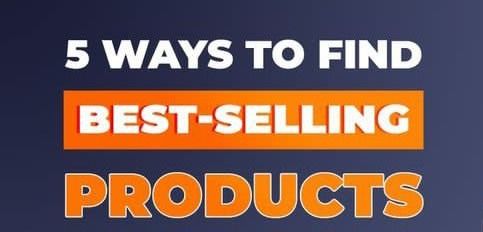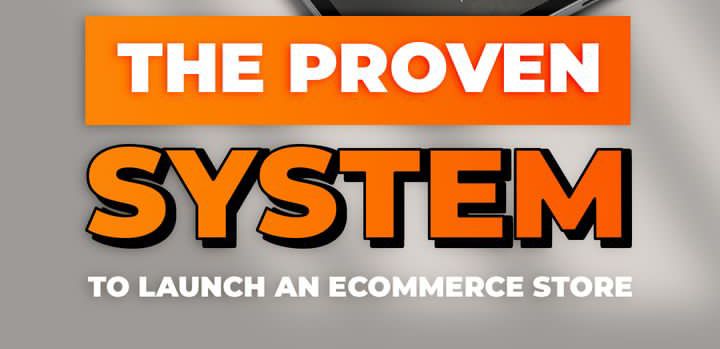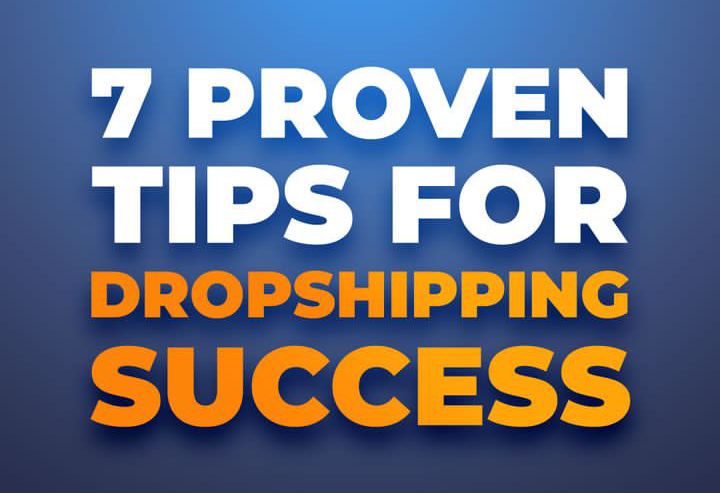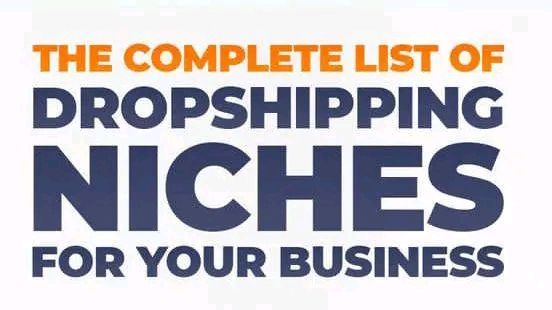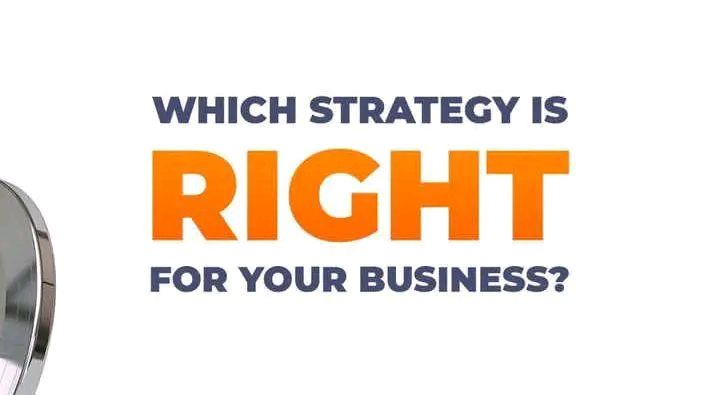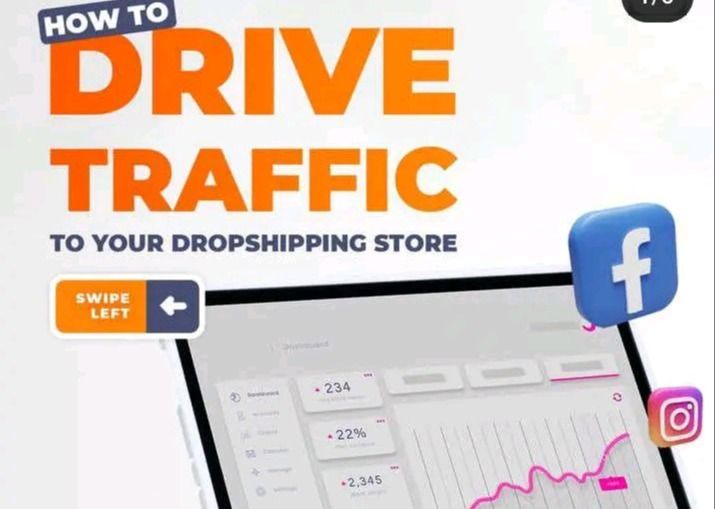
WEALTH TALENT E-COMMERCE SOLUTIONS
I am WEALTH TALENT E-COMMERCE SOLUTIONS EXPERT, I can provide digital services that cater to businesses of all sizes, helping them establish and grow their online presence. Here's how small, medium, and big companies can benefit from my services:
Small Companies:
- Setting up an e-commerce platform (Shopify, WooCommerce, etc.) to start selling online
- Creating a professional website design that reflects their brand
- Configuring payment and shipping options
- Basic SEO and social media integration
- Ongoing support and maintenance to ensure smooth operations
Medium Companies:
- Enhancing their existing e-commerce platform with advanced features (product reviews, loyalty programs, etc.)
- Improving website performance and speed optimization
- Developing a comprehensive digital marketing strategy (SEO, PPC, email marketing)
- Integrating third-party services (inventory management, shipping providers)
- Analyzing sales data and providing insights for business growth
Big Companies:
- Custom e-commerce solutions tailored to their specific needs
- Advanced integrations with existing systems (ERP, CRM, etc.)
- Comprehensive digital transformation strategy
- Advanced data analytics and performance monitoring
- Ongoing optimization and improvement of their e-commerce operations
My services can help businesses of all sizes:
- Increase online sales and revenue
- Improve customer experience and engagement
- Enhance brand visibility and credibility
- Streamline operations and reduce costs
- Stay competitive in the ever-evolving e-commerce landscape
Feel free to ask about specific services or solutions tailored to your business needs!
ORDER OUR SERVICE NOW!!!
5 EFFECTIVE WAYS TO FIND BEST SELLING PRODUCTS.
Here are 5 effective ways to find best-selling products, both physical and digital:
1. Amazon Best Sellers:
Explore Amazon's best-seller lists, including the Top 100, Amazon Trends, and Amazon Movers and Shakers. This will give you insights into popular products across various categories.2. Google Trends:
Utilize Google Trends to identify trending products and topics. This tool provides valuable insights into what people are searching for and what's currently in demand.3. Social Media:
Leverage social media platforms like Instagram, Facebook, and Twitter to discover popular products. Look for products with high engagement, hashtags, and influencer promotions.4. eBay and Etsy:
Research top-selling products on eBay and Etsy, which can indicate demand for specific items. You can also use tools like eBay's "Trending" page and Etsy's "Best Selling" list.5. Online Tools and Software:
Utilize specialized tools like:
- Jungle Scout (Amazon product research)
- Helium 10 (Amazon product research)
- TrendHunter (trend and product research)
- SaleHoo (wholesale and dropshipping research)
- ClickBank (digital product research)These tools can help you identify top-selling products, trends, and consumer demand, giving you a competitive edge in finding profitable products to sell.
Explore more:
- Order now.......
HOW TO START A HIGHLY PROFITABLE E-COMMERCE WEBSITE STORE.
Starting a highly profitable e-commerce website store requires careful planning, execution, and ongoing optimization.
Here's a step-by-step guide to help you get started:
1. Research and validate a profitable niche:
- Identify a niche with high demand and low competition
- Validate your idea using tools like Google Trends, Amazon Best Sellers, and social media
2. Create a business plan and set goals:
- Define your target audience, mission, and objectives
- Outline marketing, sales, and revenue projections
3. Choose a profitable business model:
- Decide on a business model (B2B, B2C, subscription, etc.)
- Consider dropshipping, private labeling, or wholesale
4. Select a suitable e-commerce platform:
- Choose a platform (Shopify, WooCommerce, etc.) that scales with your business
- Consider integrations, customization, and support
5. Register a domain and secure hosting:
- Register a unique domain name
- Choose a reliable web hosting service (Bluehost, SiteGround, etc.)
6. Design a visually appealing website:
- Create a professional logo and branding
- Design a user-friendly website with high-quality product images
7. Source high-quality products:
- Find reliable suppliers or manufacturers
- Negotiate prices, delivery, and payment terms
8. Optimize product listings for SEO:
- Write detailed, keyword-rich product descriptions
- Use high-quality product images and videos
9. Set up payment and shipping options:
- Configure payment gateways (PayPal, Stripe, etc.)
- Set up shipping options and calculate rates
10. Launch and market your store:
- Launch your store and promote it on social media, ads, and content marketing
- Offer discounts, free shipping, or other incentives to attract customers
11. Monitor and optimize performance:
- Track sales, profits, and customer satisfaction
- Analyze performance metrics and optimize your store accordinglyAdditionally, consider the following tips to increase profitability:
* Offer high-margin products*
* Use email marketing and loyalty programs
* Optimize your website for mobile*
* Use influencer marketing and partnerships
* Continuously monitor and improve your storeStarting a highly profitable e-commerce website store requires ongoing effort and optimization. Stay focused on providing value to your customers, and with the right strategies, you can achieve success in the competitive e-commerce landscape.
- Order now
THE PROVEN SYSTEM TO LAUNCH AN E-COMMERCE WEBSITE STORE.
Here is a proven system to launch a successful e-commerce website store:
1. Research and planning:
- Define your niche and target audience
- Conduct market research and analyze competitors
- Create a business plan and set goals
2. Choose an e-commerce platform:
- Select a suitable platform (Shopify, WooCommerce, etc.)
- Consider scalability, customization, and integrations
3. Register a domain and secure hosting:
- Register a unique domain name
- Choose a reliable web hosting service
4. Set up payment and shipping options:
- Configure payment gateways (PayPal, Stripe, etc.)
- Set up shipping options and calculate rates
5. Design and develop your store:
- Create a visually appealing design
- Customize your store's theme and layout
- Develop a mobile-friendly and responsive design
6. Add products and optimize listings:
- Add high-quality product images and descriptions
- Optimize product listings for SEO
- Set up product variations and pricing
7. Configure taxes and accounting:
- Set up tax rates and calculations
- Integrate accounting software (QuickBooks, etc.)
8. Launch and test your store:
- Launch your store and test all features
- Ensure smooth checkout and payment processes
9. Market and promote your store:
- Develop a marketing strategy (social media, ads, etc.)
- Promote your store to attract customers
10. Monitor and optimize performance:
- Track sales, profits, and customer satisfaction
- Analyze performance metrics and optimize your store accordinglyBy following this system, you can set up a successful e-commerce website store that attracts customers and drives sales.
Explore more.....
- Order now
HERE ARE SOME PROVEN TIPS FOR DROPSHIPPING SUCCESS
HERE ARE 7 PROVEN TIPS FOR DROPSHIPPING SUCCESS:
1. Choose a profitable niche: Research and select a niche with low competition, high demand, and profitable products.
2. Find a reliable supplier:
Partner with a trustworthy supplier that offers high-quality products, timely shipping, and competitive pricing.3. Set competitive prices:
Price your products competitively to attract customers while ensuring profit margins.4. Create a professional online store: Build a visually appealing and user-friendly online store that showcases products and provides a seamless shopping experience.
5. Develop a marketing strategy: Implement effective marketing tactics like social media advertising, influencer partnerships, and email marketing to reach your target audience.
6. Optimize product listings:
Craft detailed and SEO-optimized product descriptions to improve visibility and conversions.7. Monitor and analyze performance: Track sales, profits, and customer satisfaction metrics to identify areas for improvement and optimize your dropshipping business accordingly.
Remember, success in dropshipping requires ongoing effort and optimization. Stay focused on providing value to your customers and adapting to market changes to achieve long-term success.
Explore more:
- Order now
SOME OUT OF 500 PROFITABLE TIPS FOR ONLINE AND E-COMMERCE ƁUSINESSES
Here are 500 profitable tips for online and e-commerce businesses:
1. Optimize your website for mobile devices.
2. Use search engine optimization (SEO) techniques.
3. Leverage social media marketing.
4. Utilize email marketing campaigns.
5. Offer free shipping and returns.
6. Provide excellent customer service.
7. Use influencer marketing.
8. Create valuable content.
9. Utilize affiliate marketing.
10. Analyze and optimize your website's analytics.
11. Use pay-per-click (PPC) advertising.
12. Offer loyalty programs.
13. Use video marketing.
14. Optimize product pages for conversions.
15. Use customer reviews and testimonials.
16. Keep your website secure and trustworthy.
17. Use retargeting ads.
18. Offer personalized recommendations.
19. Utilize chatbots for customer support.
20. Stay up-to-date with industry trends.And many more! Here are some additional tips, grouped by category:
*Marketing*
- Use Instagram Reels and TikTok
- Leverage user-generated content
- Run contests and giveaways
- Utilize webinars and online events
- Use podcast advertising*Sales and Conversion*
- Use scarcity tactics
- Offer bundle deals and discounts
- Use upselling and cross-selling techniques
- Optimize your checkout process
- Use urgency marketing*Customer Service*
- Respond to customer inquiries quickly
- Use AI-powered customer support tools
- Offer multilingual support
- Use customer feedback to improve your business
- Offer a satisfaction guarantee*Operations and Logistics*
- Use a dropshipping model
- Optimize your supply chain
- Use a fulfillment center
- Offer same-day shipping
- Use inventory management software*Analytics and Optimization*
- Use A/B testing and experimentation
- Analyze your website's heatmaps
- Use Google Analytics and other analytics tools
- Track your key performance indicators (KPIs)
- Use data to inform your business decisions*E-commerce Platforms and Tools*
- Use Shopify or other e-commerce platforms
- Utilize plugins and extensions
- Use product research tools
- Leverage inventory management software
- Use shipping and fulfillment toolsThese are just a few of the many profitable tips for online and e-commerce businesses. Remember to stay focused on your customers, optimize your operations, and continually adapt to changes in the market.
Explore more:
- Order now
THE DIFFERENT BETWEEN BRAND AWARENESS AND LEAD GENERATION
WHAT IS THE DETAILS DIFFERENT BETWEEN BRAND AWARENESS AND LEAD GENERATION?
Brand Awareness and Lead Generation are two distinct marketing objectives with different goals and strategies:
Brand Awareness:
- Goal: Increase recognition, familiarity, and perception of your brand
- Focus: Building brand identity, reputation, and visibility
- Metrics: Reach, impressions, views, engagement (likes, shares, comments)
- Strategies:
- Social media marketing
- Content marketing (blog posts, videos, podcasts)
- Influencer partnerships
- Sponsorships and events
- Public Relations (PR)Lead Generation:
- Goal: Capture interest and contact information from potential customers
- Focus: Converting prospects into leads and nurturing them through the sales funnel
- Metrics: Lead volume, conversion rates, cost per lead (CPL), lead quality
- Strategies:
- Targeted advertising (Google Ads, Facebook Ads)
- Landing pages and forms
- Email marketing and nurturing campaigns
- Content upgrades (ebooks, webinars, checklists)
- Sales outreach and follow-upKey differences:
- Brand Awareness focuses on building reputation and visibility, while Lead Generation focuses on capturing interest and contact information.
- Brand Awareness is often measured by reach and engagement metrics, while Lead Generation is measured by lead volume and conversion rates.Explore more:
- Order now
TO FIND THE PERFECT E-COMMERCE PRODUCT
HOW TO FIND THE PERFECT E-COMMERCE PRODUCT?
Finding the perfect e-commerce product involves a combination of research, analysis, and validation.
Here are some steps to help you find a profitable product:
1. Identify your niche:
Determine your area of interest and expertise.2. Research popular trends: Use tools like Google Trends, Amazon Best Sellers, and social media to find trending products.
3. Analyze competition:
Use tools like Jungle Scout, Helium 10, or AMZScout to analyze competitors' sales, revenue, and reviews.4. Evaluate product demand:
Use tools like Google Keyword Planner, SEMrush, or Ahrefs to determine search volume and demand.5. Validate product potential:
Use tools like Facebook Ads, Google Ads, or Kickstarter to test product interest and viability.6. Consider product seasonality:
Ensure the product has consistent demand throughout the year.7. Evaluate product profitability:
Calculate the product's potential profit margin based on costs, pricing, and shipping.8. Ensure product quality:
Research suppliers and manufacturers to ensure high-quality products.9. Check product compliance:
Verify compliance with regulations, laws, and industry standards.10. Continuously monitor and optimize: Stay up-to-date with market trends, customer feedback, and product performance to optimize your product offerings.
Additionally, consider the following factors:
- Unique selling points:
Identify what sets your product apart from competitors.- Target audience:
Understand your ideal customer demographics, interests, and pain points.- Product lifecycle:
Consider the product's stage in its lifecycle, from introduction to maturity.- Supplier reliability:
Ensure reliable and consistent supply chain management.- Product customization:
Consider offering personalized or customizable products.- Scalability:
Choose products with potential for scalability and growth.Explore more:
- Order now
THE ARE SOME COMPLETE DROPSHIPPING NICHES GOOD FOR E-COMMERCE ƁUSINESSES
WHAT ARE THE COMPLETE DROPSHIPPING NICHES GOOD FOR SHOPIFY BUSINESS?
Here are 100 profitable dropshipping niches suitable for Shopify businesses:
1. Fashion:
- Women's clothing
- Men's clothing
- Plus-size clothing
- Maternity wear
- Kids' clothing
2. Beauty and Personal Care:
- Skincare
- Haircare
- Makeup
- Fragrances
- Health supplements
3. Electronics:
- Smartphones
- Laptops
- Gaming consoles
- Smartwatches
- Headphones
4. Home and Garden:
- Furniture
- Decorations
- Kitchenware
- Gardening tools
- Home textiles
5. Health and Wellness:
- Fitness equipment
- Yoga accessories
- Healthy food options
- Supplements
- First aid kits
6. Outdoor and Sports:
- Camping gear
- Hiking equipment
- Fitness wear
- Sports accessories
- Cycling gear
7. Food and Beverage:
- Gourmet food
- Specialty coffee
- Tea
- Chocolate
- Pet food
8. Baby and Kids:
- Strollers
- Car seats
- Toys
- Kids' furniture
- Nursery decor
9. Pet Care:
- Pet food
- Pet accessories
- Pet grooming
- Pet health supplements
10. Arts and Crafts:
- Painting supplies
- Sewing machines
- Knitting tools
- Jewelry making
- Crafting materialsAdditional niches:
- Musical instruments
- Automotive parts
- Business and office supplies
- Educational resources
- Travel accessories
- Wedding and party supplies
- Religious and spiritual products
- Custom phone cases
- Personalized gifts
- Stationery and office suppliesThese niches are popular and profitable, but it's essential to research and validate your target audience's demand and competition before starting your Shopify business.
Here are some tips to help you choose a profitable niche:
- Identify your passions and interests
- Research popular trends and products
- Analyze competition and market demand
- Validate your niche with online tools and resources
- Start small and scale up graduallyExplore more:
- Order now
THE STRATEGY THAT RIGHT AND GOOD FOR FOR PHYSICAL AND DIGITAL PRODUCT ƁUSINESSES
WHICH STRATEGY IS RIGHT AND GOOD FOR PHYSICAL AND DIGITAL PRODUCT ƁUSINESS?
The best strategy for physical and digital product businesses depends on various factors, such as target audience, market trends, and resources.
However, here are some effective strategies that can work well for both physical and digital product businesses:1. Omnichannel Marketing:
Provide a seamless shopping experience across online and offline channels, including social media, email, website, physical stores, and customer support.2. Content Marketing:
Create valuable content (blog posts, videos, guides, etc.) that educates and engages your target audience, building trust and driving sales.3. Influencer Marketing:
Partner with influencers who have a genuine interest in your products, reaching new audiences and building credibility.4. Email Marketing:
Build an email list and send targeted campaigns to subscribers, promoting products, offering exclusive discounts, and sharing news.5. Search Engine Optimization (SEO): Optimize your website and product pages for relevant keywords, improving visibility in search engine results.
6. Paid Advertising:
Run targeted ads on Google Ads, Facebook Ads, and native ad networks to reach potential customers.7. Loyalty and Retention:
Focus on retaining existing customers through excellent customer service, loyalty programs, and exclusive offers.8. Social Media Marketing:
Leverage platforms like Facebook, Instagram, Twitter, and Pinterest to engage with customers, share products, and run targeted ads.9. Affiliate Marketing:
Partner with affiliates who can promote your products and earn commissions.10. Data-Driven Decision Making:
Analyze sales data, customer behavior, and market trends to inform business decisions and optimize strategies.Explore more:
- Order now
HOW TO DRIVE TRAFFIC TO YOUR BUSINESS WEBSITE
HOW TO DRIVE TRAFFIC TO DROP SHIPPING STORE?
Here are some effective ways to drive traffic to a drop shipping store:
1. Social Media Marketing:
Utilize platforms like Facebook, Instagram, Twitter, and Pinterest to reach your target audience. Create engaging content, run ads, and collaborate with influencers.2. Search Engine Optimization (SEO): Optimize your store and product pages for relevant keywords to improve visibility in search engine results.
3. Influencer Marketing:
Partner with influencers in your niche to promote products to their followers.4. Content Marketing:
Create valuable content like blog posts, videos, and guides to attract and educate potential customers.5. Paid Advertising:
Run targeted ads on Google Ads, Facebook Ads, and native ad networks to reach potential customers.6. Email Marketing:
Build an email list and send regular newsletters with promotions, discounts, and new product releases.7. Affiliate Marketing:
Partner with affiliates who can promote your products and earn commissions.8. Referral Marketing:
Encourage customers to refer friends and family in exchange for incentives.9. Optimize Product Listings:
Use high-quality product images, detailed descriptions, and competitive pricing to improve conversions.10. Loyalty and Retention:
Focus on retaining existing customers through excellent customer service, loyalty programs, and exclusive offers.11. Collaborate with Other Businesses: Partner with complementary businesses to expand your audience.
12. Optimize Your Store:
Ensure a user-friendly, mobile-responsive, and secure shopping experience.- Order now
